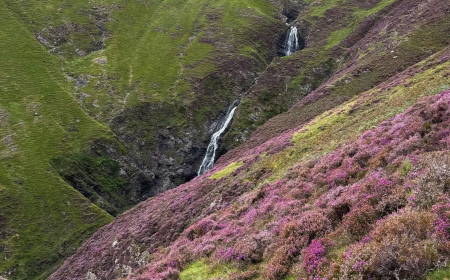Kurdish farmer defies skeptics with successful ostrich farm

A Kurdish farmer in eastern Turkey is defying skeptics with his ostrich farm that he says makes him a lot of money.
“In our country, they raise big animals, cows, bulls, sheep and goats. No one has seen ostriches. We first saw them on television. Then I went to Iran. I saw them in Iran. I saw that they had made it very professional and we said let whatever happens happen, we will do this work,” Ibrahim Akkurt told Rudaw.
Inspired by what he saw in Iran, Akkurt dedicated 25 dunams of his land to pursue the endeavor. He started farming ostrich in 2023 with 15 eggs and faced a lot of skepticism from his neighbours, who would ask questions like “Are you crazy?” or “Who raises ostriches in Bazid [a town in Agri province]?”
Ostriches are originally found in African deserts and savannas, however they are very adaptable and can thrive in mountainous terrain as well. Once called the “Camel Bird,” females can reach heights of nearly two meters and weigh about 100 kilograms, while the males can grow to more than two and a half meters tall and weigh as much as 130 kilograms.
Currently, Akkurt has around 200 of the large birds on a plot of land near Mount Ararat, bordering Iran. He explained that every part of the ostrich is useful.
(Source:Rudaw)
Its lean meat can be sold for 1,000 Turkish liras ($25) per kilogram and is beneficial for those with diabetes, high blood pressure, and cholesterol problems, according to the farmer.
Their eggs are the largest of any living animal. A single ostrich egg can weigh two kilograms, the equivalent of about 25 chicken eggs
Akkurt said around half of his ostrich eggs hatch into chicks that he can sell for 10,000 liras ($250) each.
Ostrich skin is used for making belts and bags, their feathers are used in the textile industry, and their bones are used in the pharmaceutical industry.
“Its feathers, skin, meat, bones, beak, nails, fat - all of it is money,” said Akkurt.
Akkurt said he has customers from across the country. “Those people who visit our website know that we do this work professionally and they trust us,” he said.
Ancient Egyptian, Assyrian and Babylonian empires actively groomed, farmed and traded ostrich plumes, according to the San Diego Zoo and Wildlife Alliance.





































/file/attachments/2984/kevin_927177_ac6b66996c6681fa673210c6013a08c2.jpg)



















